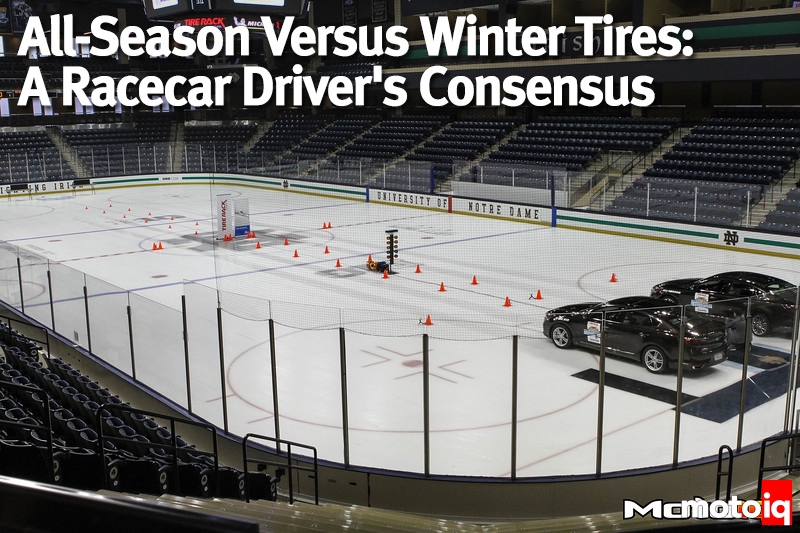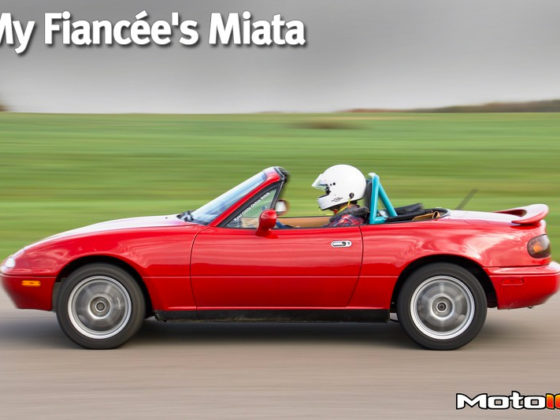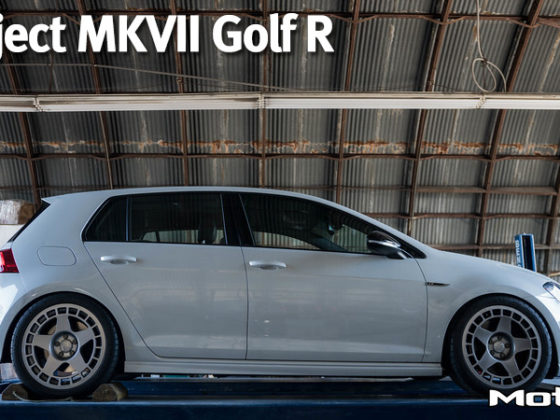,

With never being on ice in a passenger car or on winter tires, my goal for the first of the two passes was to take what originally seemed like a very mild approach to just feel everything out. I clocked in a 5.558 second time slip. It seemed incredibly slow to take that long for only 60 feet, but I beat the all-season competition by over 5 seconds. Yikes! In the racing that I normally do, 5 seconds is a lot, and this was only a 60 foot drag strip! The problem is, the competition spun their wheels the entire pass, so of course the split is going to be astronomical like that. I took mental note of that, and reversed back to prepare for my second pass.
 Since I felt my first pass was slow, my goal for the second pass was to expedite the roll on launch a little more. This ended up not working and resulted in way too much wheel spin, forcing me to do my best to back out of the wheel spin slightly to regain traction and continue to increase momentum. The time: 5.830, which was about three-tenths slower than my first pass. There's a saying that smooth is fast, but in this case, SLOW was fast!
Since I felt my first pass was slow, my goal for the second pass was to expedite the roll on launch a little more. This ended up not working and resulted in way too much wheel spin, forcing me to do my best to back out of the wheel spin slightly to regain traction and continue to increase momentum. The time: 5.830, which was about three-tenths slower than my first pass. There's a saying that smooth is fast, but in this case, SLOW was fast! As I watched my teammates drive and continue to smoke the all-season tire equipped team while they continued lighting up their tires, I thought that I had a plan for that car once we switched. The plan was to do what I did during my first pass on the winter tires- just even less. That should suffice, given the far less grip, right?

WRONG! I barely rolled onto the throttle and instantly lit up the front tires, and once they were spinning, it was game over. I couldn't get them to stop spinning for the entire 60 foot drag strip even while trying to back out of it. After clocking in a 9.247 second time, I thought to myself, great, there has to be a way to do this without spinning the fronts. Plenty of people drive on these tires on public roads during the winter outside of California and that's why this event is even happening, so there has to be a way to do it.
After finally getting the car to stop in the brake zone (which felt terrible and took far longer than I had anticipated), I put it into reverse to bring the car back for my second run…
 Wait a second, on my reverse back to the lineup, I didn't spin the wheels. I instantly thought to myself, “Boom, there it is. There's my strategy!” I had one last shot at the ice drag racing and knew I needed to make it count. It was going to be horridly slow, but…
Wait a second, on my reverse back to the lineup, I didn't spin the wheels. I instantly thought to myself, “Boom, there it is. There's my strategy!” I had one last shot at the ice drag racing and knew I needed to make it count. It was going to be horridly slow, but…
 There is was! An 8.045 second run! A whole 1.2 seconds faster than my first run and actually the fastest time of the day for the all-seasons, yet it felt painfully slow and was still nearly 2.5 seconds slower than my best time on the winter tires- which ended up being the second fastest time of the day on winter tires (I lost the “W” by a few hundredths- bummer!). (Note: This picture is from a different group; I couldn't take a picture of myself and drive at the same time.) All it took was almost literally nothing- I released the brake with a mild, smooth pace, and let the automatic transmission move the car forward- just like I would do when reversing the car back to the lineup. Once the brake was fully released, I barely kissed the throttle until I felt the limit before the wheels spin.
There is was! An 8.045 second run! A whole 1.2 seconds faster than my first run and actually the fastest time of the day for the all-seasons, yet it felt painfully slow and was still nearly 2.5 seconds slower than my best time on the winter tires- which ended up being the second fastest time of the day on winter tires (I lost the “W” by a few hundredths- bummer!). (Note: This picture is from a different group; I couldn't take a picture of myself and drive at the same time.) All it took was almost literally nothing- I released the brake with a mild, smooth pace, and let the automatic transmission move the car forward- just like I would do when reversing the car back to the lineup. Once the brake was fully released, I barely kissed the throttle until I felt the limit before the wheels spin. They say patience is virtue, and this form of ice drag racing really proved that- especially with the all-seasons.



